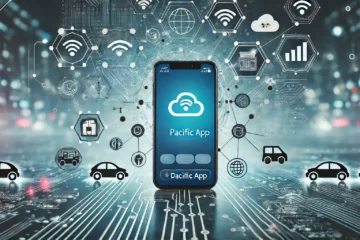Introduction – An Overview of Scope 4 Emissions and Why Companies Must Take It Seriously
A newcomer to carbon accounting, they are indirect emissions from a company’s value chain activities. Unlike scope 1 and scope 2 emissions, they are not directly owned or controlled by the company. Understanding and reporting on Scope 4 emissions is critical for businesses committed to Sustainability and Decarbonization. Consequential and attributional methodologies offer ways to calculate these emissions, each with its merits. Scope 4 best practices include setting baselines, conducting comprehensive life cycle assessments, analyzing market impact and consumer behavior, using advanced modeling techniques, ongoing monitoring, and seeking independent verification. By addressing Scope 4 emissions, companies can enhance their environmental reporting, contribute to a greener future, and achieve sustainability goals.
Read on to know how your scope 4 emission management can take your organization closer to achieving its net-zero objectives.

Every business, regardless of its size, contributes to environmental changes. In terms of carbon accounting, we are already aware of Scope 1, Scope 2, and Scope 3 emissions. These are distinct categories used to measure a company’s emissions output, thus helping understand, measure, and establish future reduction strategies. A newcomer to this lineup is Scope 4 emissions, also known as avoided emissions.
Avoided emissions present a new concept in this domain, adding to the considerations already posed by other types of emissions. Understanding scope 4 emissions involves investigating what sets them apart from the other categories and exploring how they could benefit companies aiming to enhance their sustainability efforts and meet new climate targets.
Definition
The term ‘Scope 4’ was introduced by the World Resources Institute, the organization responsible for creating the GHG Protocol.
Scope 4 emissions are indirect emissions from an organization’s value chain activities. Unlike scope 1 and 2 emissions, which are directly owned or controlled by the company, scope 4 emissions are a consequence of its activities but are not under its direct ownership or control.
What’s Covered
Scope 4 emissions can significantly contribute to a company’s overall carbon footprint. Neglecting these emissions can result in an incomplete understanding of a company’s environmental impact and hamper its sustainability objectives.
Companies must take their Scope 4 emission management efforts seriously as stakeholders such as investors, customers, and regulators increasingly advocate for transparency and measures to address Scope 4 emissions.
It’s important to underline the distinction between reduced emissions and avoided emissions.
Reduced emissions stem from an actual decrease in a company’s GHG or Greenhouse Gas emissions over a defined period following the implementation of an action plan aimed at curbing its carbon footprint. Avoided emissions are determined by equating a product or service with a low level of carbon to a reference situation.
Scope 4 emissions can be present in two forms.
- Emissions reductions if the reference scenario aligns with the previous situation.
- A diminished rise in emissions when projects facilitate a lower increase than the counterfactual scenario.
Various products contribute to Scope 4 emissions. They include fuel-efficient tires, some types of detergents, fuel-saving tires, and teleconferencing tools and services designed to promote better functionality.
Examples:
- Teleconferencing services contribute to Scope 4 emissions by facilitating remote work and reducing travel needs and associated emissions.
- Energy-efficient appliances can cause emissions savings when consumers opt for them over less efficient models.
This approach extends carbon accounting beyond a company’s direct and indirect emissions from operations. It includes the positive environmental impact of its offerings.
Scope 4 is not officially recognized like Scopes 1, 2, and 3, but it offers valuable insights into emission reductions achieved through product usage, contributing to a more sustainable future.
Why Are They Important
Scope 4 emissions offer a holistic perspective on a company’s environmental influence. It helps shed light on the beneficial side effects of its products or services. This facet of carbon accounting is critical in grasping the entirety of a company’s carbon footprint and its role in fostering a net-zero economy.
By reporting on Scope 4 emissions, a company can illustrate the emissions it directly or indirectly generates and the emissions it mitigates through adopting its products or services.
- This broader perspective allows stakeholders to appreciate a company’s environmental impact beyond operations.
- It highlights the importance of innovation and sustainability in reducing emissions across product lifecycles.
- Quantifying avoided emissions reinforces a company’s dedication to sustainability and its role in global climate efforts.
Integrating Scope 4 emissions into carbon accounting practices represents a forward-thinking approach to environmental responsibilities. It encourages companies to consider their emissions and the positive environmental outcomes of their offerings, eventually paving the way for a more sustainable future.
How To Calculate
Calculating them entails a nuanced approach. It helps precisely measure the impact of a company’s products or services on reducing total greenhouse gas emissions.
The two recommended methodologies recommended for evaluating Scope 4 emissions are:
Consequential Approach
This method of analyzing Scope 4 emissions includes evaluating the system-wide change in emissions resulting from a specific decision or action. This method considers the direct effects of a product’s use, secondary impacts, and potential unintended consequences.
For example, if a company presents an innovative, energy-efficient tool, the consequential approach would measure the total drop in emissions across the entire system, including the energy grid, due to its extensive adoption.
This approach necessitates an exhaustive analysis of the product’s environmental impact within a broader context. It considers factors such as market dynamics, consumer behavior, and potential shifts in industry practices.
Attributional Approach
The attributional approach centers on the total emissions of a product compared to a baseline product. This method is more direct and is often favored for its practicality, especially when information is available or time constraints exist.
For example, when an electric vehicle is used, the attributional approach would compare the emissions produced during its manufacturing, usage, and disposal with those of a traditional gasoline-powered vehicle.
The disparity in product emissions indicates Scope 4 emissions, representing emissions avoided by using the electric vehicle over the conventional alternative.
Both approaches have their merits and can be chosen based on the specific context of the company and its products. The selection between these methods depends on the company’s objectives, the nature of its products, and the availability of data and resources.
Companies may choose the consequential approach when seeking a holistic view of their impact, especially in complex systems with numerous interdependencies. The attributional approach may be preferred when simplicity, practicality, or data limitations force you to adopt elaborate methodologies.
Best Practices
Most businesses face unfamiliar terrain when reporting Scope 4 emissions, as a standardized methodology has not yet been defined. However, various best practices have surfaced to assist organizations in precisely computing and disclosing these emissions. These methods guarantee transparency and precision and also improve the integrity of the company’s environmental reporting.
Setting A Baseline For Comparison
The first step in computing Scope 4 emissions is setting a baseline. This involves evaluating the emissions that would have occurred without the company’s product or service. For instance, emissions from an energy-efficient appliance are compared to standard appliances. This baseline is a benchmark for measuring emissions reductions attributable to the product or service.
Life Cycle Assessment (LCA)
A detailed Life Cycle Assessment (LCA) is important. This involves assessing a product’s environmental impacts from raw material extraction to disposal. Contrasting the LCA of a company’s product with less efficient alternatives helps measure avoided emissions.
Market Impact and Consumer Behavior Analysis
Market impact and consumer behavior analysis involves assessing how a product influences consumer behavior or displaces more emissions-intensive products in the market. For instance, a teleconferencing service reduces business travel, leading to lower emissions. This test helps decode the broader impact of the product on the market and consumer practices.
Advanced Modeling Methods
Employing advanced modeling techniques for direct measurement of avoided emissions can be challenging. Techniques like statistical or simulation models offer accurate estimations of the emissions avoided by the company’s products or services.
Regular Monitoring
Due to the dynamic nature of markets and technology, ongoing monitoring and updating are crucial for calculating Scope 4 emissions. Regular reviews can help assess technological changes, market penetration, and consumer behavior. In this approach, calculations remain relevant and accurate even as circumstances change.
Independent Verification
Using the expertise of independent authorities and seeking third-party verification enhances the accuracy and reliability of Scope 4 emissions calculations. Collaboration with environmental experts and auditors adds scrutiny and credibility to the reporting process.
Conclusion
Addressing Scope 4 emissions is vital for businesses dedicated to sustainability and environmental protection. Companies can make significant strides toward fulfilling their sustainability objectives by understanding the significance and implications of Scope 4 emissions and implementing strategies to manage and mitigate them. They can thus promote a more environmentally conscious future and save costs in the long term.
Check our Glossary and our solution offering for your sustainable, cost-saving efficiency program.
